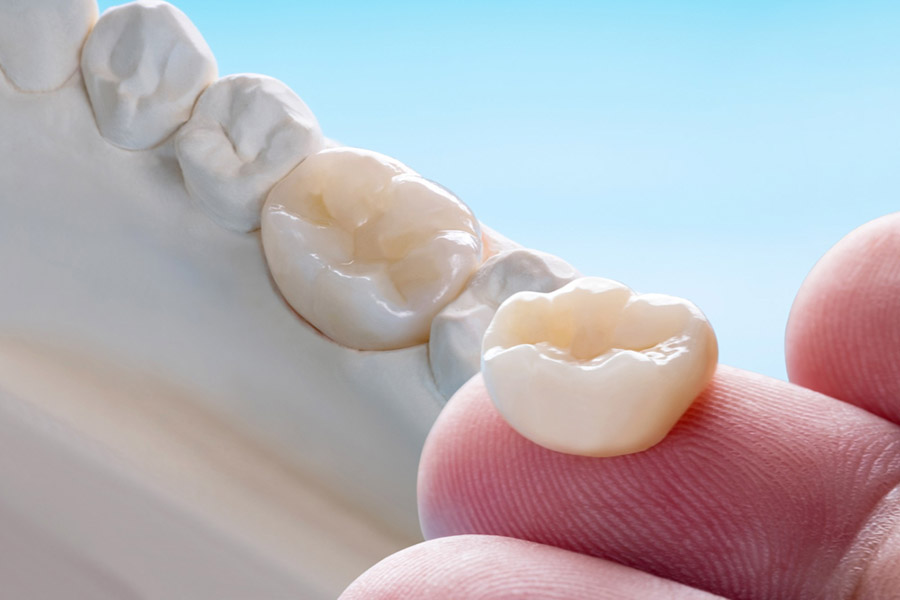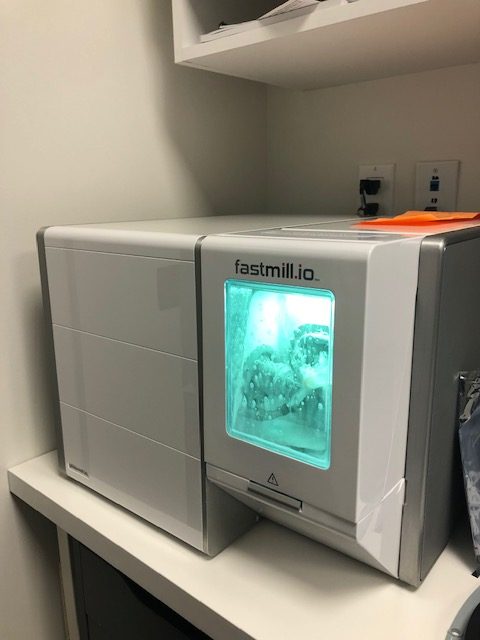The Crown, The Visible Part of the Tooth
Although the word “crown” is most often used to describe a restoration, it is primarily a component of the dental anatomy. The dental crown is the visible part of the tooth.
It is this part, covered with enamel, which is exposed to air, bacteria and any other external element. It helps protect the inner parts of the tooth, which are more sensitive.
Crown Restoration
The crown of a tooth can suffer different types of damage. The most frequent are tooth decay, trauma (accident) or the presence of cracks or fractures. Regardless of the cause of the crown deterioration, it is important to repair or replace it, depending on the severity of the damage.
When the dental crown is damaged, this is when an artificial crown can be recommended to replace it in whole or in part. After a cavity, a root canal, a trauma (accident) or the appearance of cracks or fractures, a crown is sometimes a good option. The crown can be bonded to the remaining part of the tooth or placed on an implant, imitating the root, if the tooth is missing or must be removed.
Never ceasing to innovate for the benefit of their patients, the dentists at the Centre Dentaire & D’Implantologie Boucherville have hi-tech and up-to-date tools at their disposal to create inlays or crowns directly in the office. These tools are assisted by two state-of-the-art computers, Trios and I-Tero. This allows us to fabricate ceramic or zircon crowns for you on site in just one appointment.
What Is Trios, I-Tero and Fastmill technology?
The basic principle behind Trios, I-Tero and Fastmill technology
Accurate impressions: Zircon and ceramic restorations are now computer-assisted in the Centre. The first step, the impression, is crucial, which is why highly accurate digital devices are used by your dentist. Not only are they accurate, but the impression itself is far less uncomfortable than traditional impression taking, which uses a pasty substance that must harden in the mouth, and which can leave unpleasant debris.
Precise design: As with impressions, the design using the software is very accurate. The 3D images obtained with the camera during the impression process allow the dentist to design the crown using the computer. The risk of error is very low thanks to these technologies.
Transparency of the process: The entire process, from the impression to the design and manufacture, is carried out in the Centre, in front of the patient’s eyes. The patient is familiarized with the machining of the crown before it is placed in the mouth. The dentist can also explain each step of the design process.

Speed: If the old methods required a waiting period, since the machining was not done in the office, this is now a thing of the past. Since your dentist has all the material, ceramic or zircon restorations are fabricated on site in a short period of time, in one appointment. You get satisfactory results without wasting time.
Safety: Numerous studies have shown that this is a very safe and reliable technology.
Comfort: While traditional methods require two local anesthetics for crown and inlay placement, these technologies require only one, limiting patient discomfort.
Predictability: These restorations are also less uncomfortable because they have properties that make them more predictable. While amalgam fillings, for example, can expand with heat and contract with cold, computer-made zircon and ceramic do not. Therefore, there is no discomfort, sensitivity or pain with daily changes in oral temperature.
Aesthetics: Ceramic crowns and inlays are highly customizable and perfectly mimic natural teeth. Your dentist will find the ceramic colour that best matches your teeth, a colour that will remain stable over time. These restorations look just like your real teeth!
Biocompatibility: All materials used are biocompatible and blend in with the body.
Preservation of natural teeth: Over the long term, crowns and inlays made by your dentist are a good option to preserve the healthy parts of your teeth. This is because fillings sometimes need to be replaced, and each time, a small amount of healthy tooth is removed along with the old filling. They are much more durable and solid than fillings, and will need to be changed much less frequently.
In addition, since the entire procedure is done in one appointment, the risk of further loss of fragile parts of the tooth is limited, since there is no waiting period.
Lastly, the Fastmill is a high-precision equipment that allows you to do everything in one appointment. It is a well known, reliable and highly safe procedure.
Don’t hesitate to consult one of our dental professionals to learn more about the technologies we use at the Centre or to establish a treatment plan.

